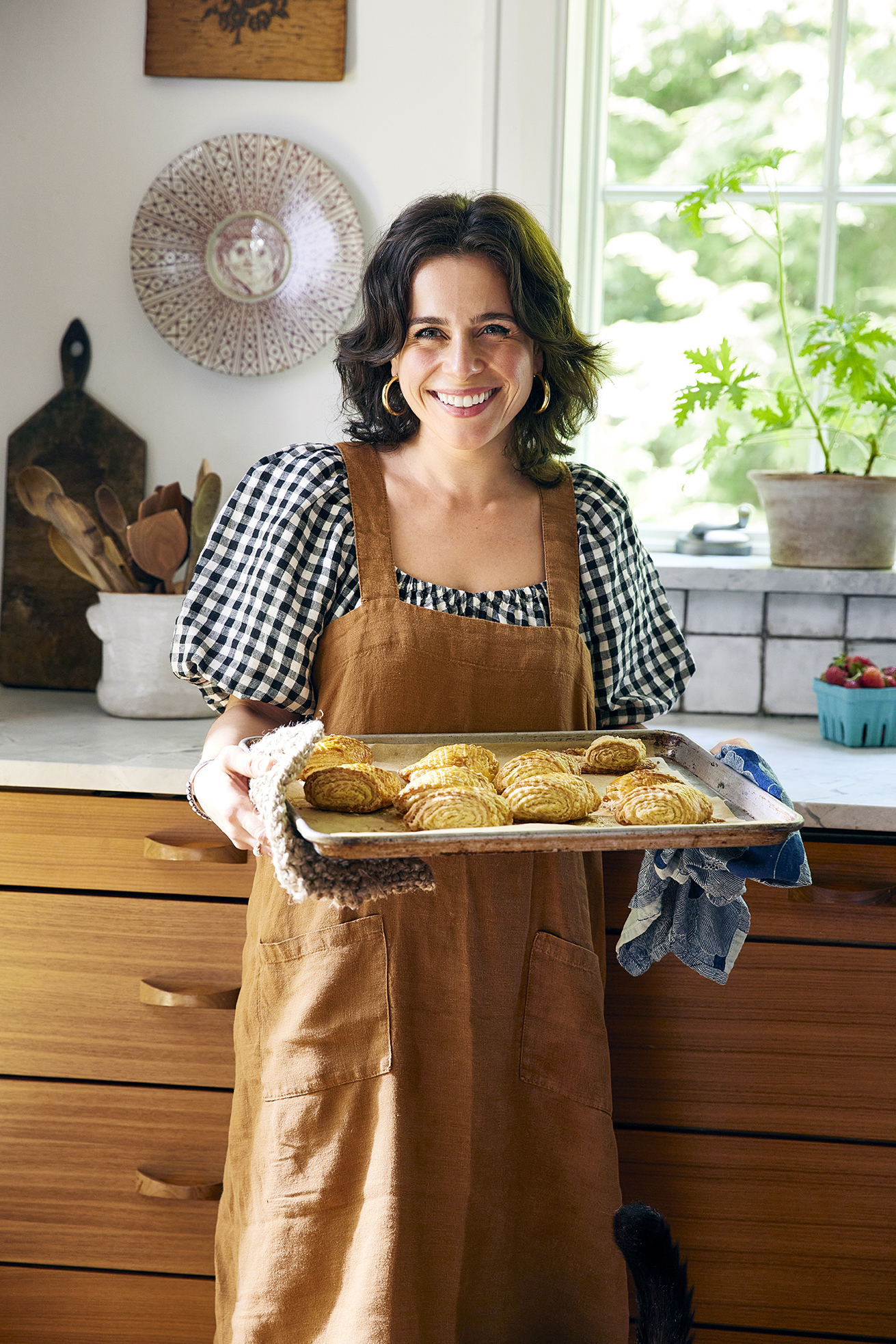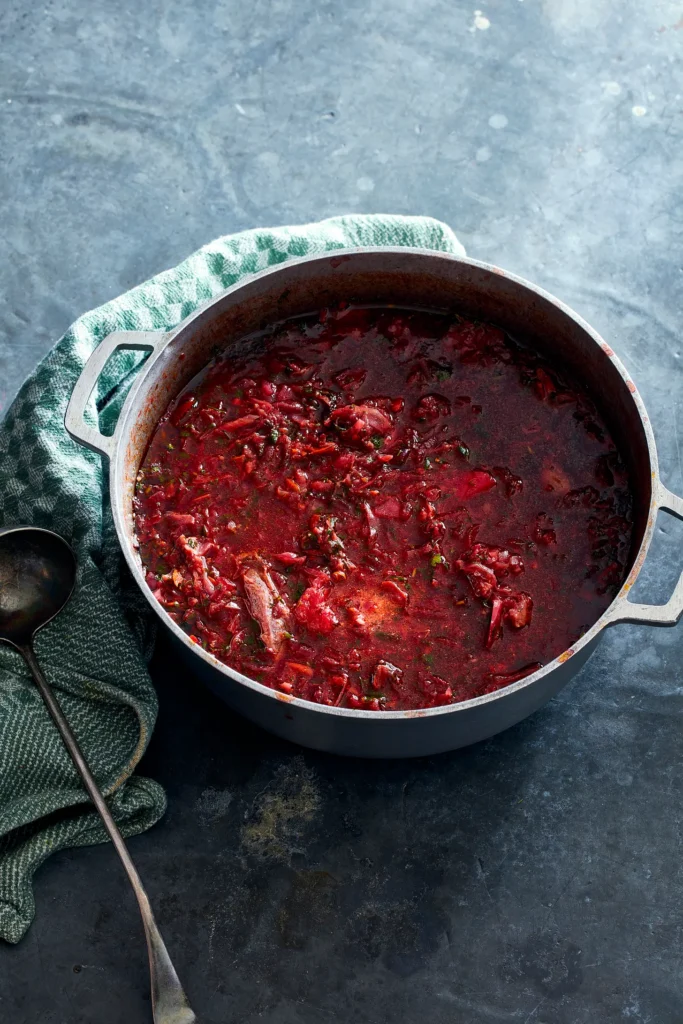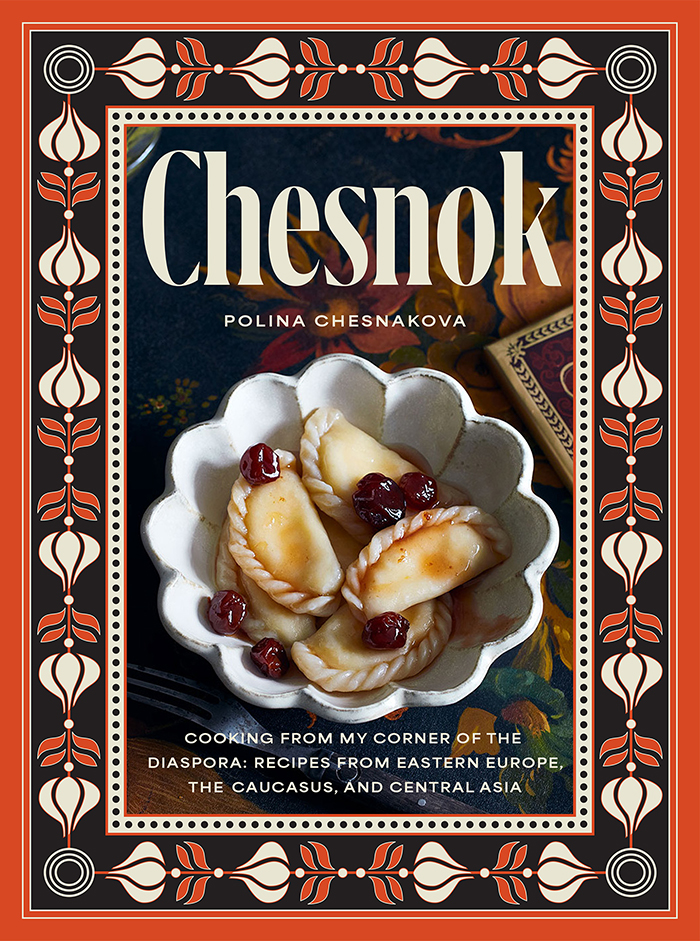
For UVA alum Polina Chesnakova, writing Chesnok: Cooking from My Corner of the Diaspora: Recipes from Eastern Europe, the Caucasus, and Central Asia was a crash course in learning her family’s culinary traditions. “I wanted to document and preserve my family’s recipes and to be able to hand down this culinary heritage to my children and keep that heritage alive in my family,” she says. Chesnakova spoke to C-VILLE about the process.
C-VILLE: What recipes are you most excited to share with readers?
Polina Chesnakova: The recipes that make the book stand apart from more traditional Eastern European cookbooks are the set of recipes where you can see my family’s roots coming through. My mom’s side of the family is from Russia, but they immigrated to Tbilisi, Georgia—so my mom and her siblings were raised to cook with a bit of Georgian flair.
What I mean by that is adding lots of fresh herbs, garlic, and spices, which give dishes a lot more vibrancy and depth. You have these sort of Eastern European comforting, nourishing foods, but then you have the Georgian flavors coming through. In the borscht, you have your traditional dill, but you also have some spicy Anaheim pepper and red pepper flakes. You have lots of cilantro, sometimes a little bit of fresh garlic. In the stuffed cabbage you have your classic blend of beef and pork with a bit of rice, but then we add fistfuls of cilantro, dill, mint. The sauce is this chunky tomato, pepper, carrot sauce that is finished with lots of fresh herbs and garlic.

In your experience, how does food transcend borders, especially in Eastern Europe?
People aren’t contained in borders. People travel, and whether it’s through voluntary migration or forced, people move. One of the things they take with them is their food as a way to bridge their old lives with their new.
My family is a blend of Eastern Europe and the Caucasus. When my family moved to the U.S., we found ourselves in a community of refugees from all over the USSR, and so the food I grew up with also pulled upon all those different cultures and peoples, and I think it speaks to the human experience.
And that connects to the garlic metaphor for which the book is named, right?
It’s funny because I started my blog, Chesnok, back in 2015 when I was still living in Charlottesville. I wanted it to be a tribute to my roots in Eastern Europe and the Caucasus. And when we started working on this book, that name was not a contender at all because I really wanted to figure out a way to speak to the region and sort of the shared history without rooting it in one culture or one language. After going around in circles for almost two and a half years, we landed back at Chesnok, because it’s a fun play on my last name, which means garlic, and then it had this beautiful symbolism. All these different cultures that I juggle can be seen through cloves that come together in a garlic head, in the same way that all these different cultures and cuisines come together at my family’s table.

As folks prepare for their own holiday meals, what are your recommendations?
For my family’s holiday meals, we have a balance of hot and cold dishes. You can set the table with salads, pickles, and ferments, and then when everyone sits down to eat, you can start dishing up all the hot dishes. It’s a great way to avoid feeling the pressure of serving everything at once.
If you’re wanting to play around with things this year, maybe instead of your usual cranberry sauce, you make a Georgian cranberry sauce called tkemali, that goes really well with poultry. I’d also recommend penovani khachapuri, a Georgian flaky cheese bread or Azeri plov with saffron-dried fruit, and chestnuts. It’s this very majestic looking dish that goes well with any roasted or grilled meat or poultry or even fish.





